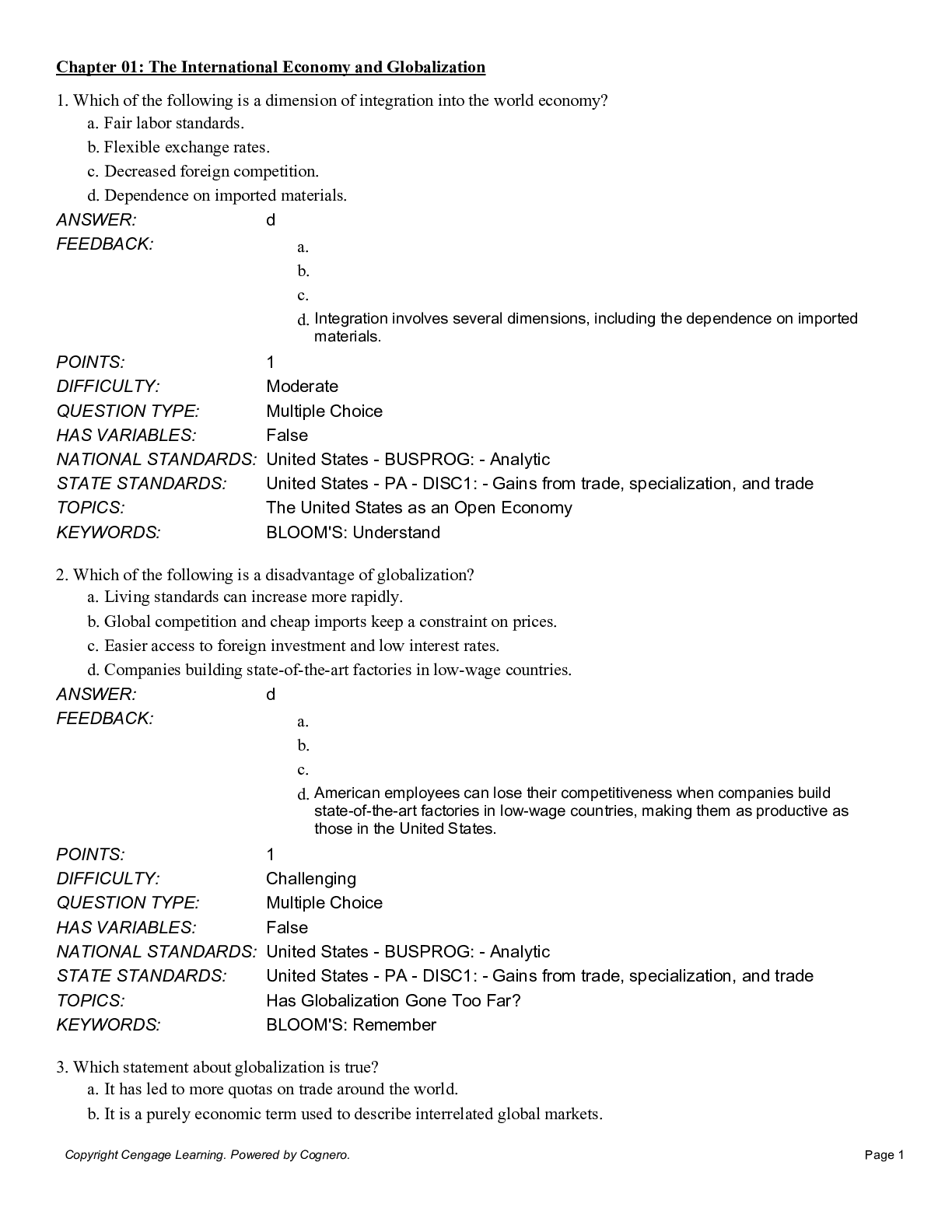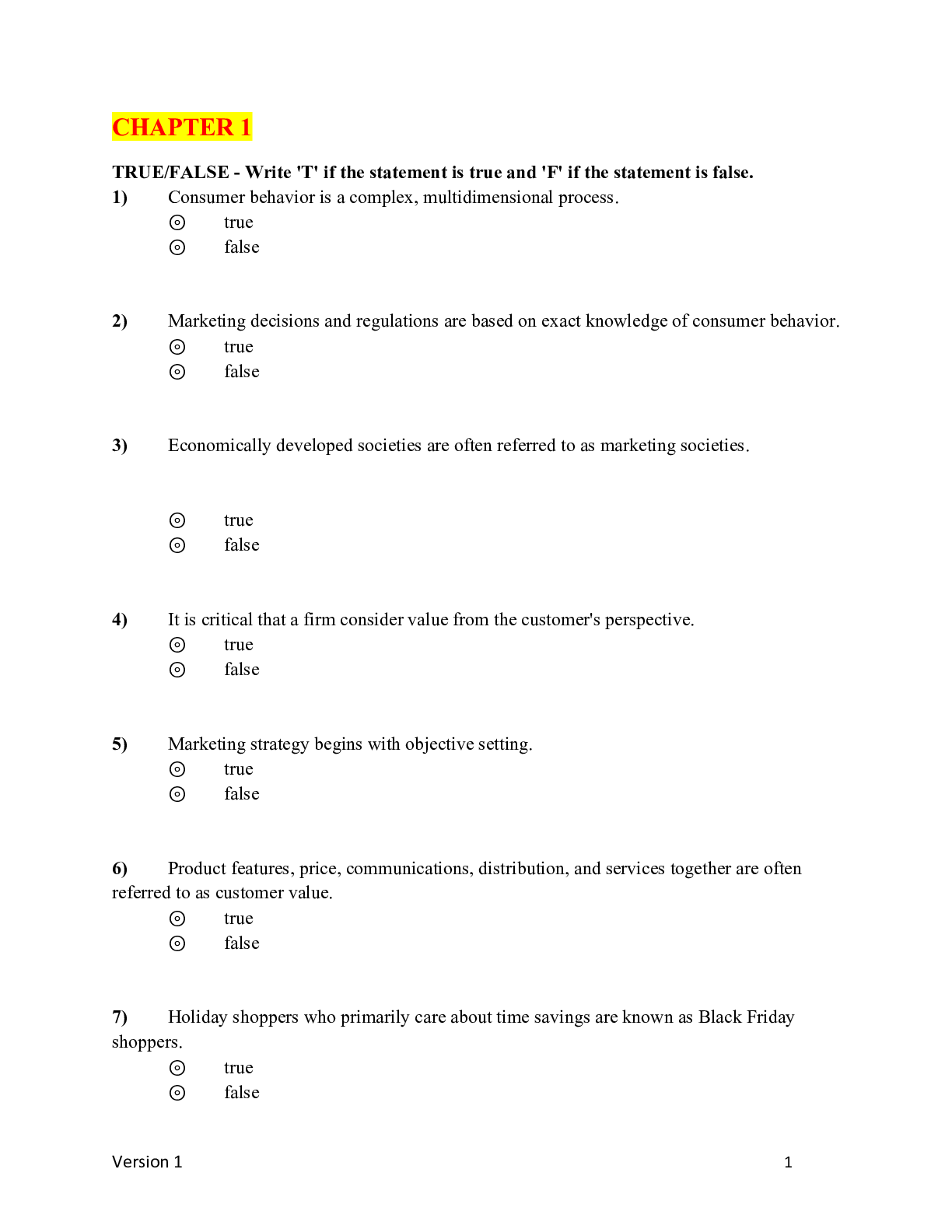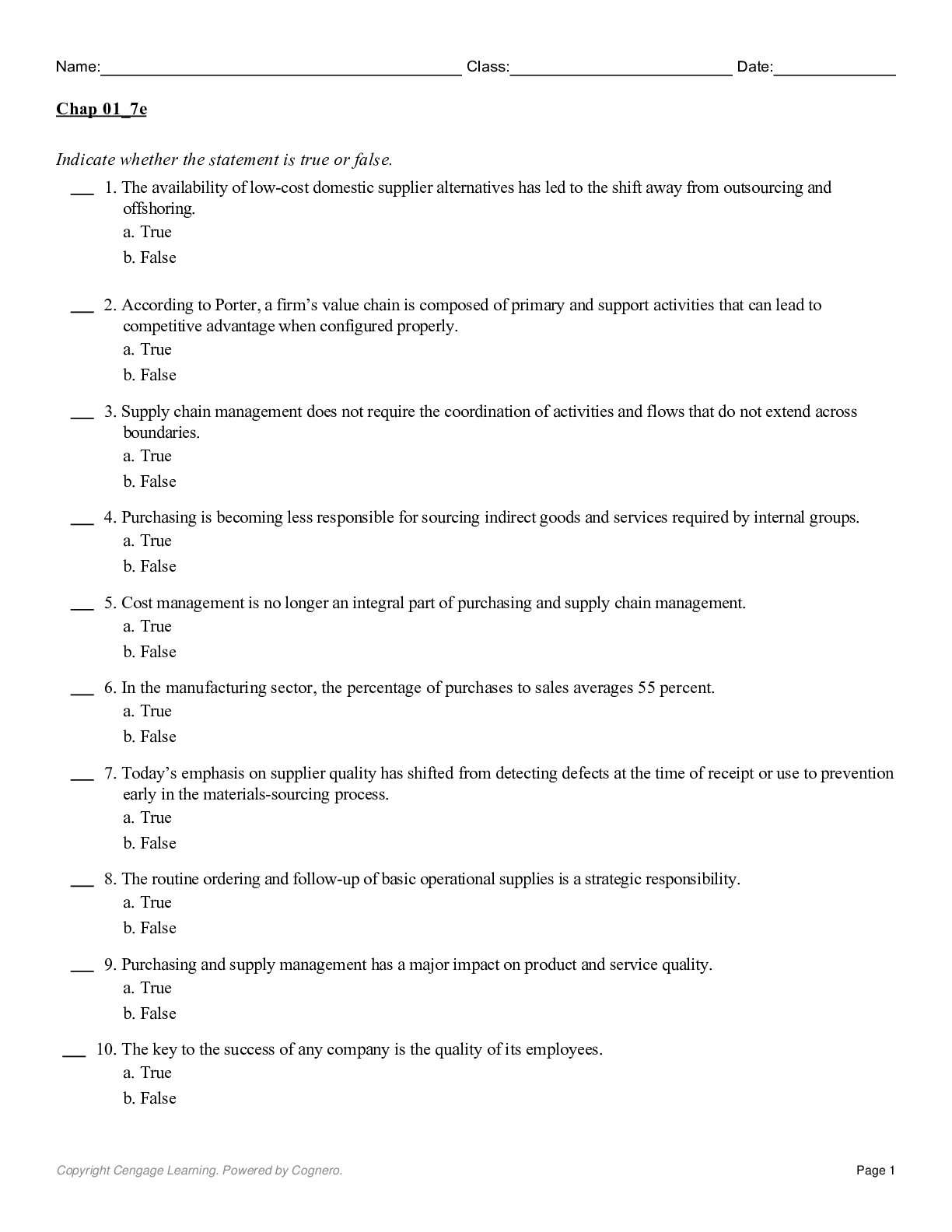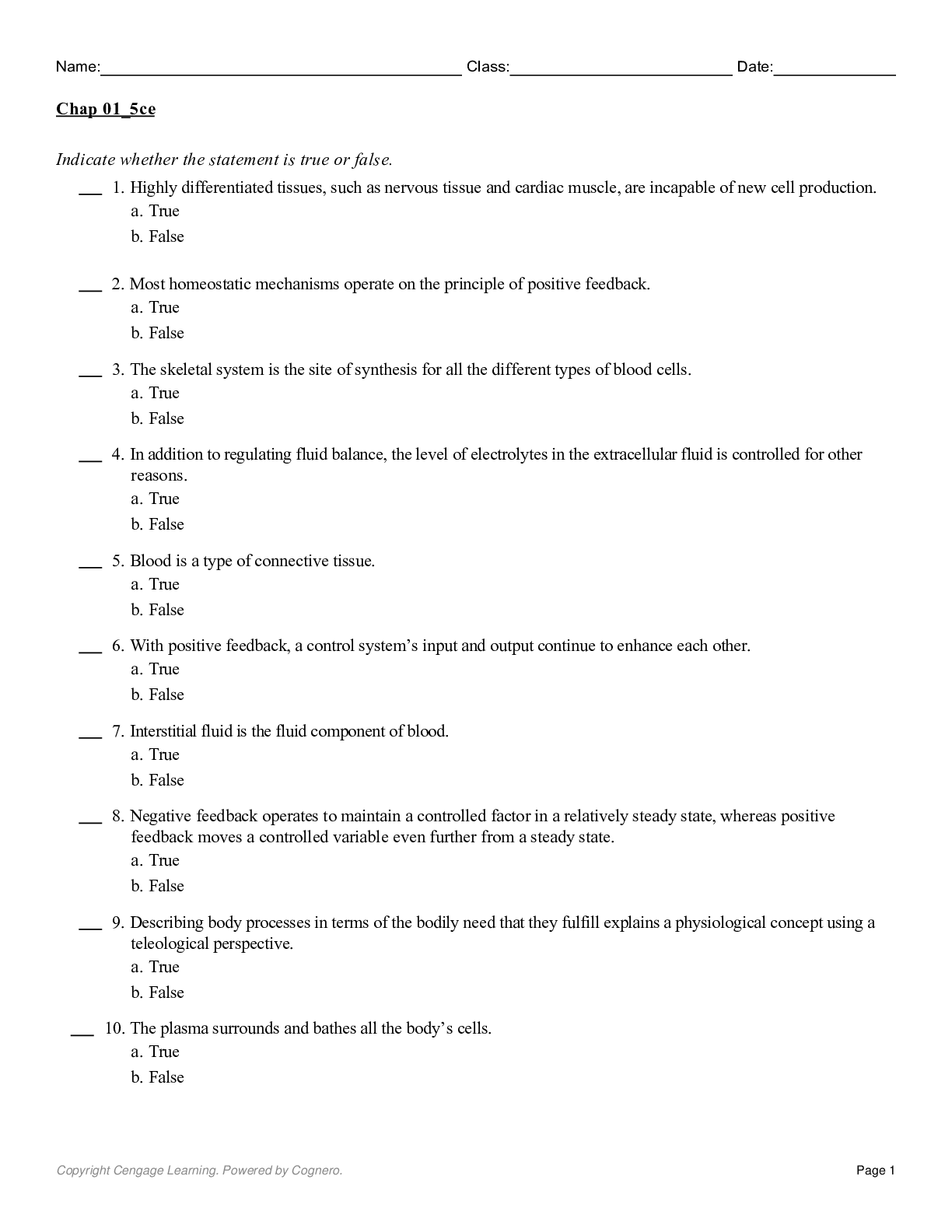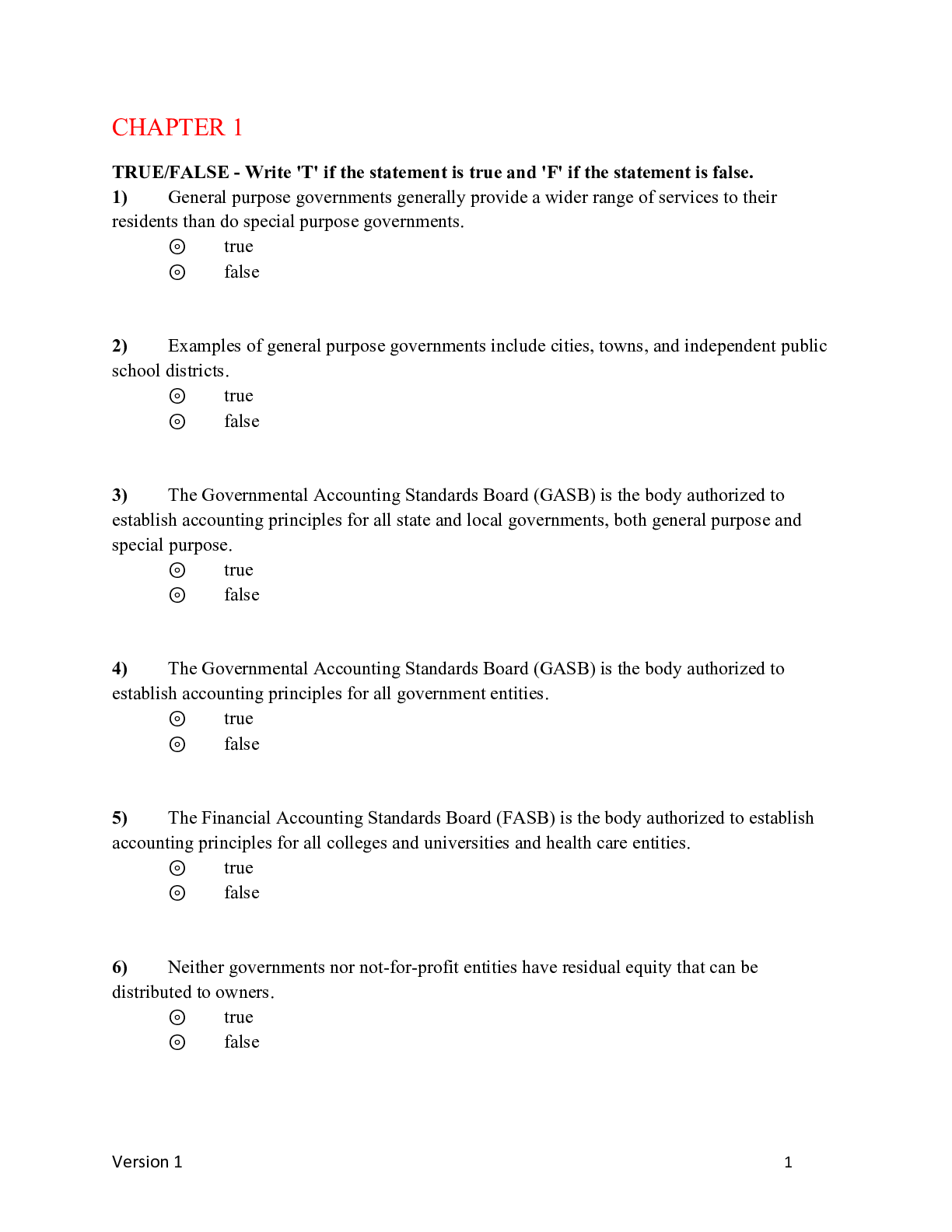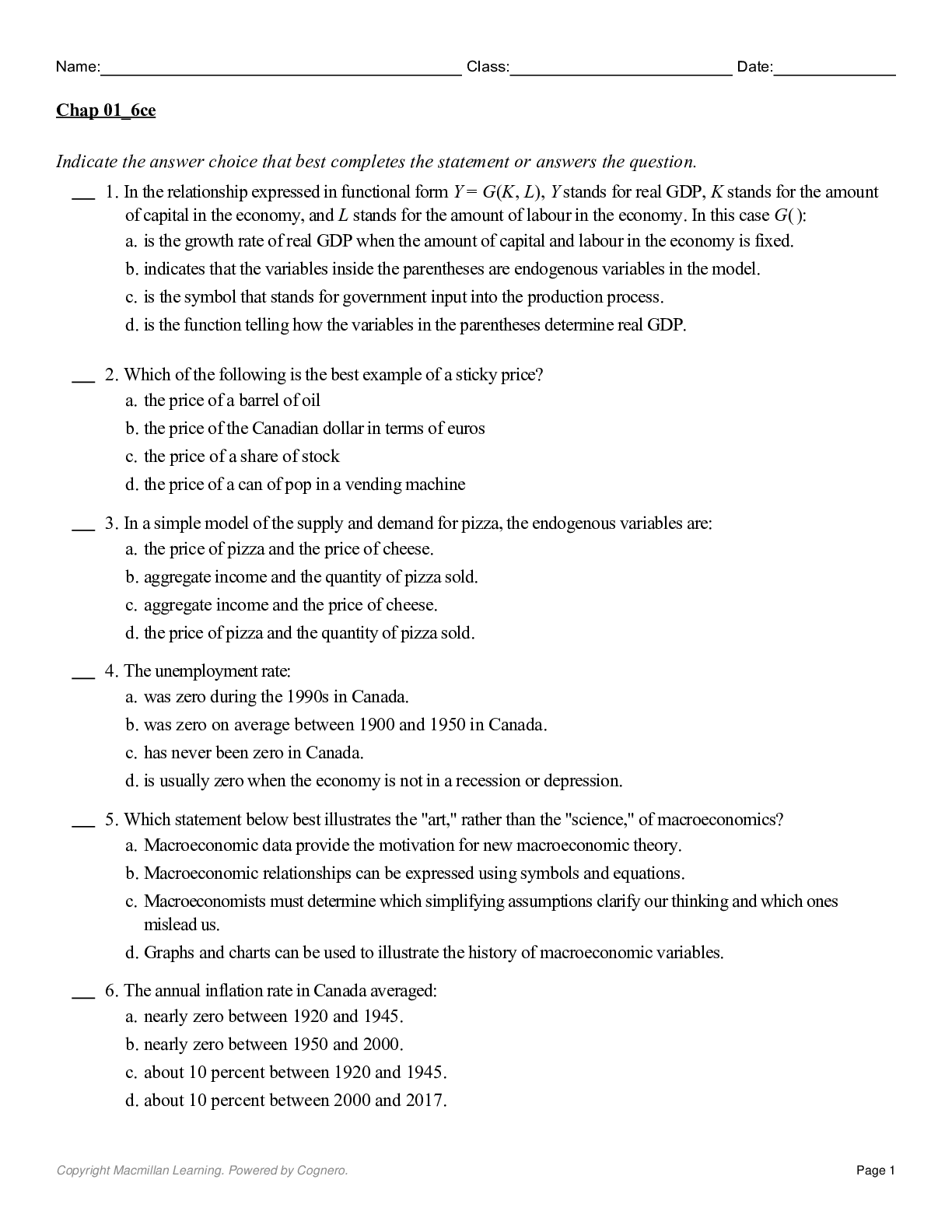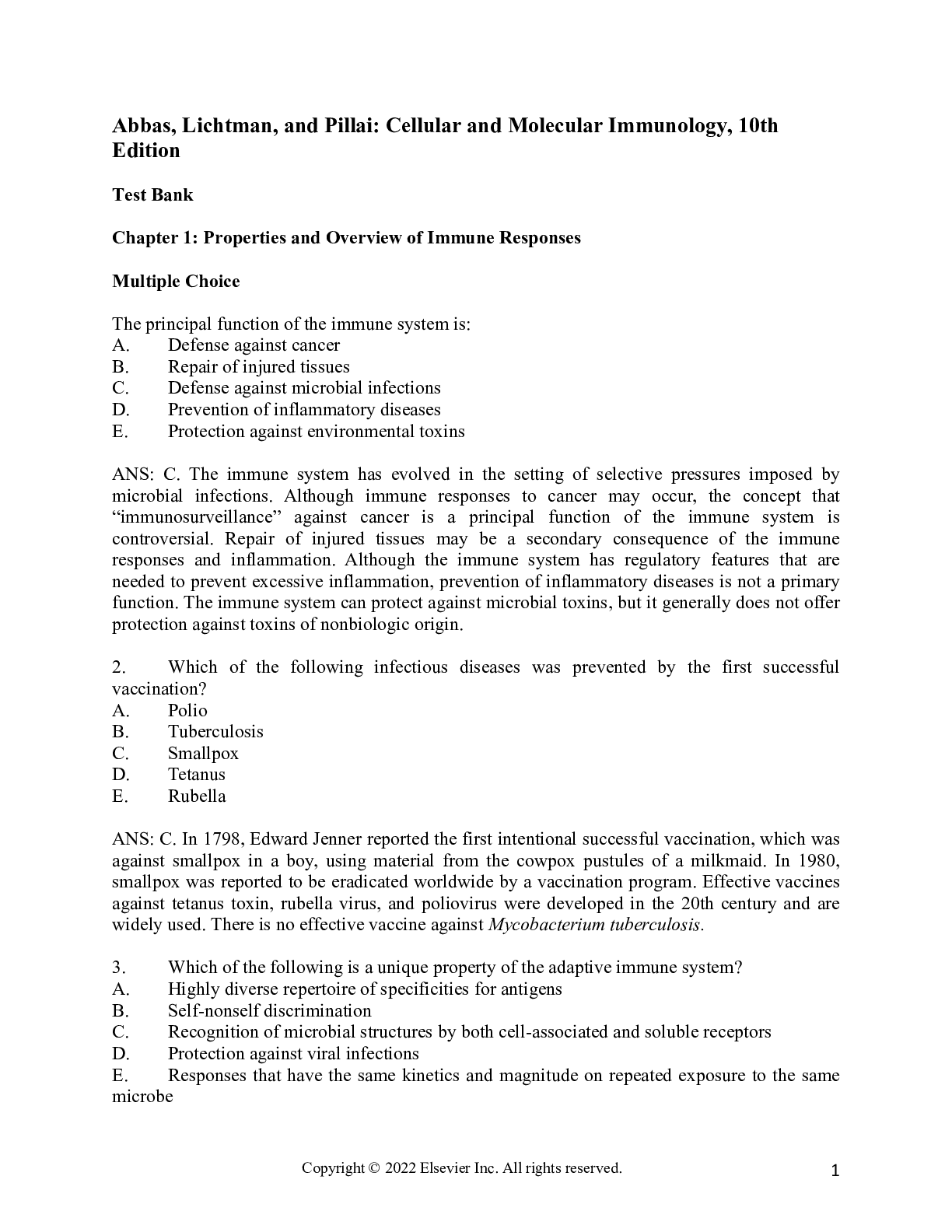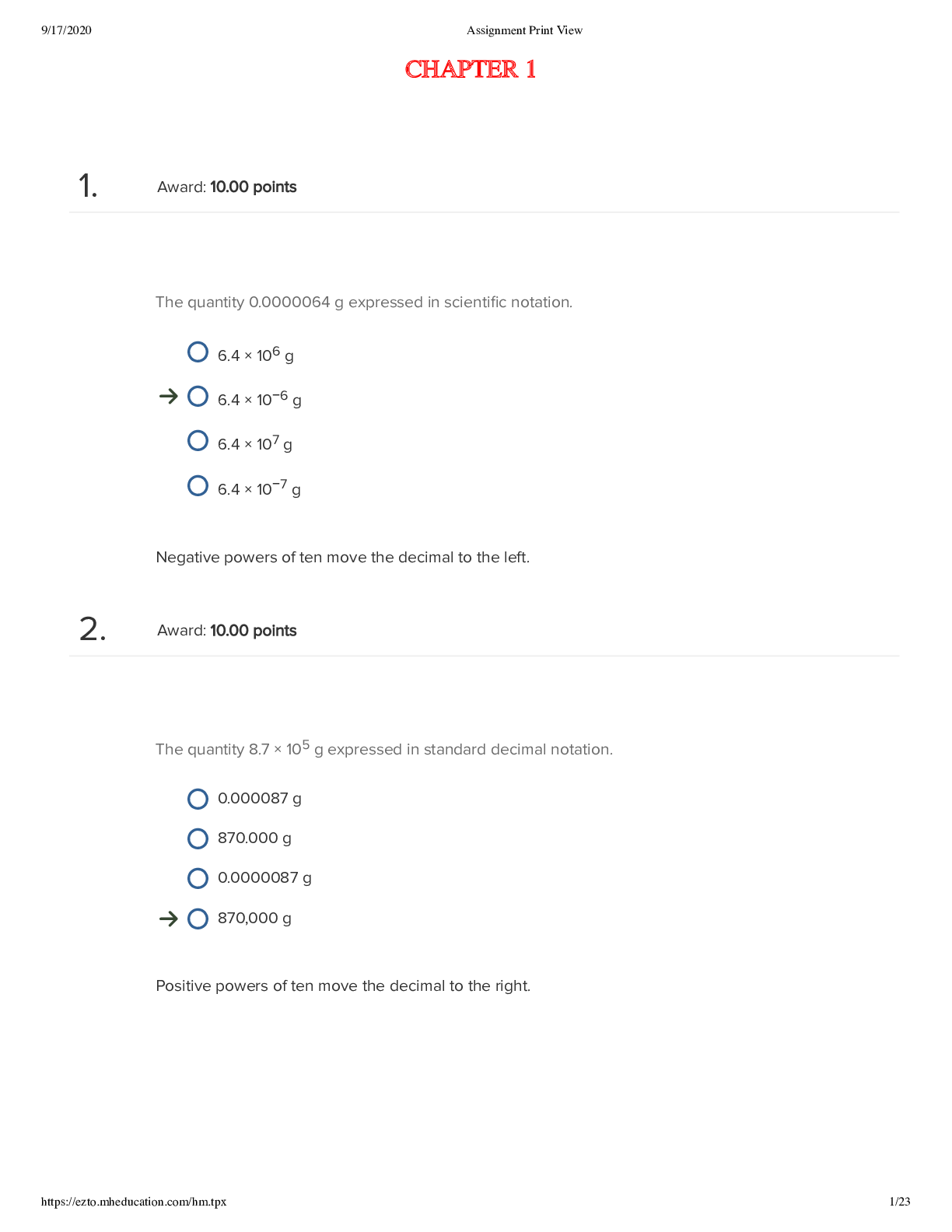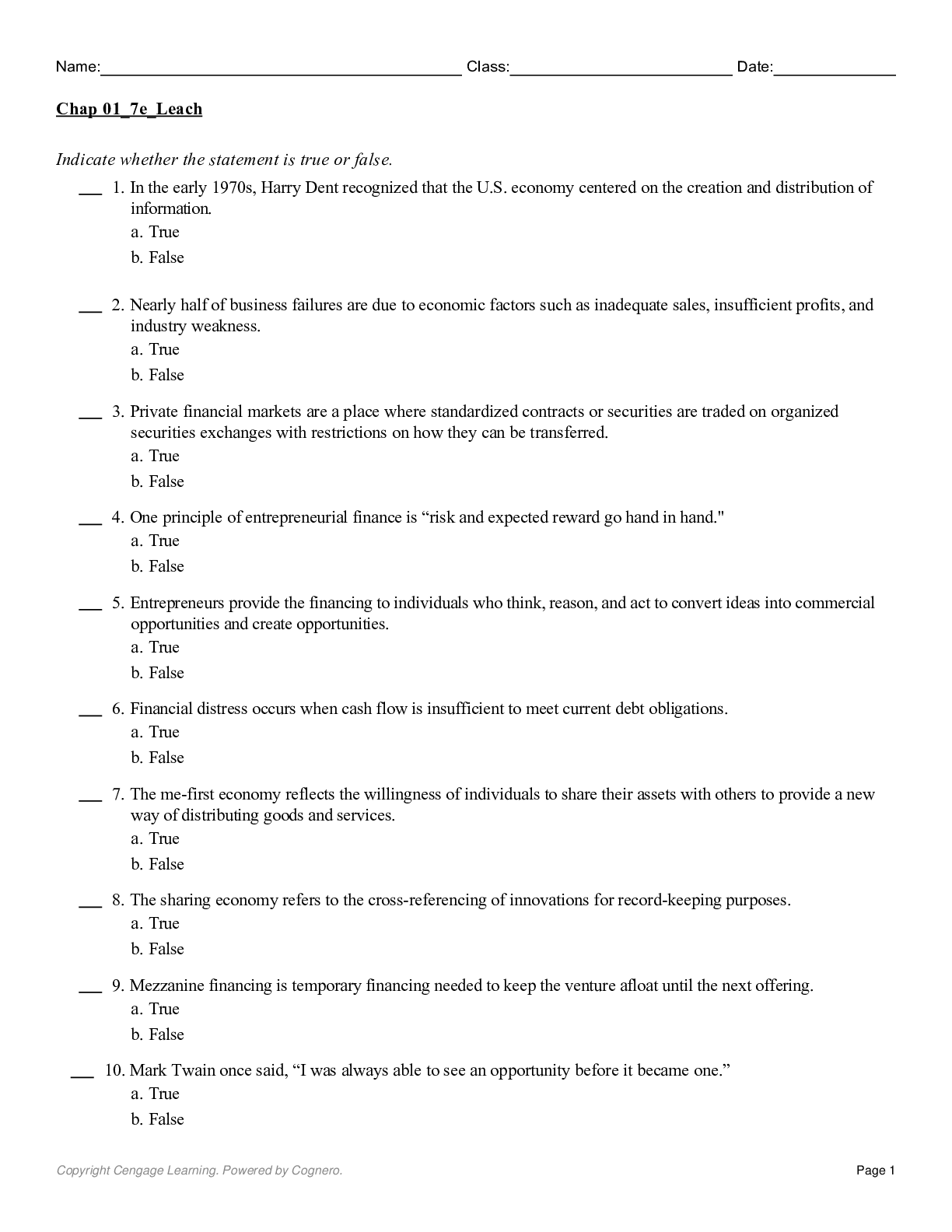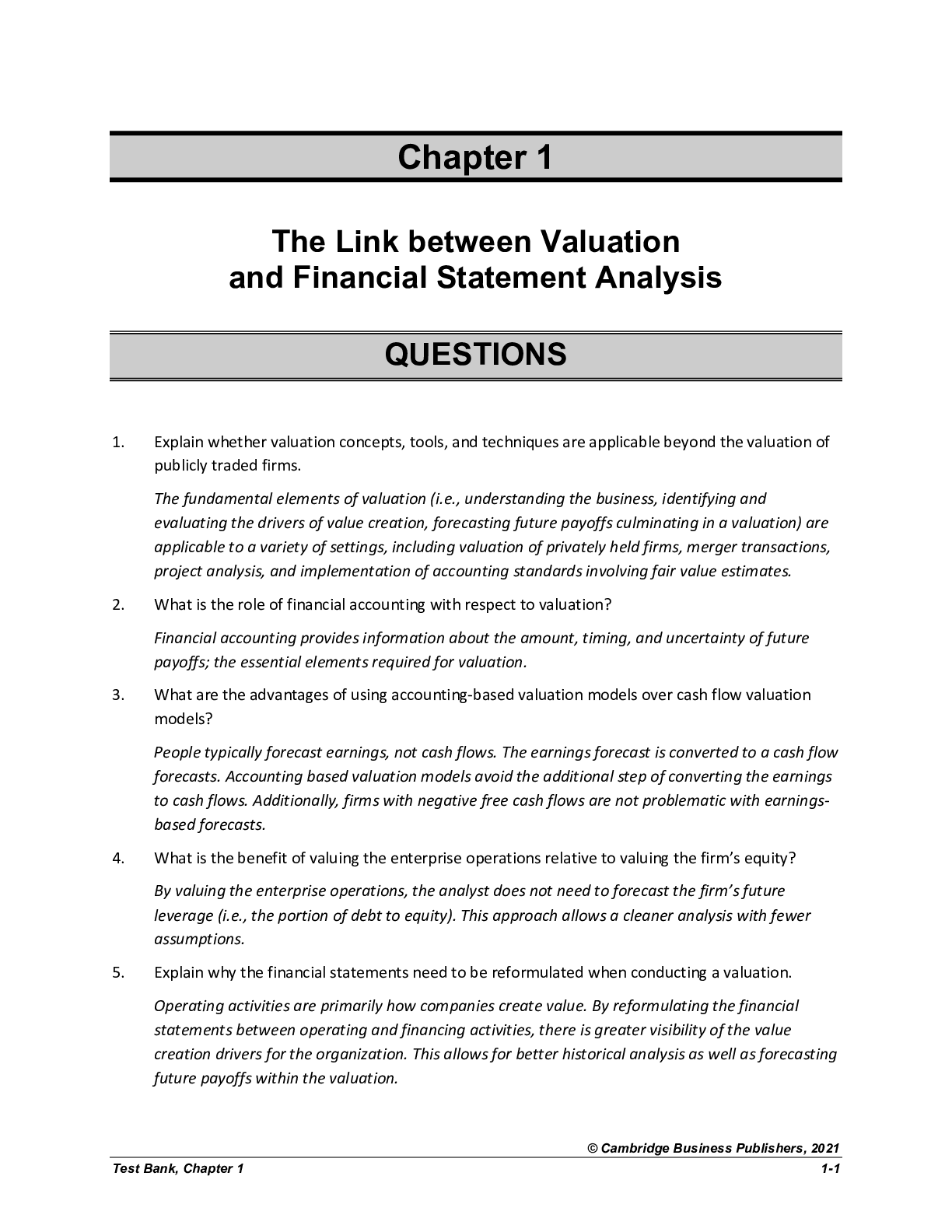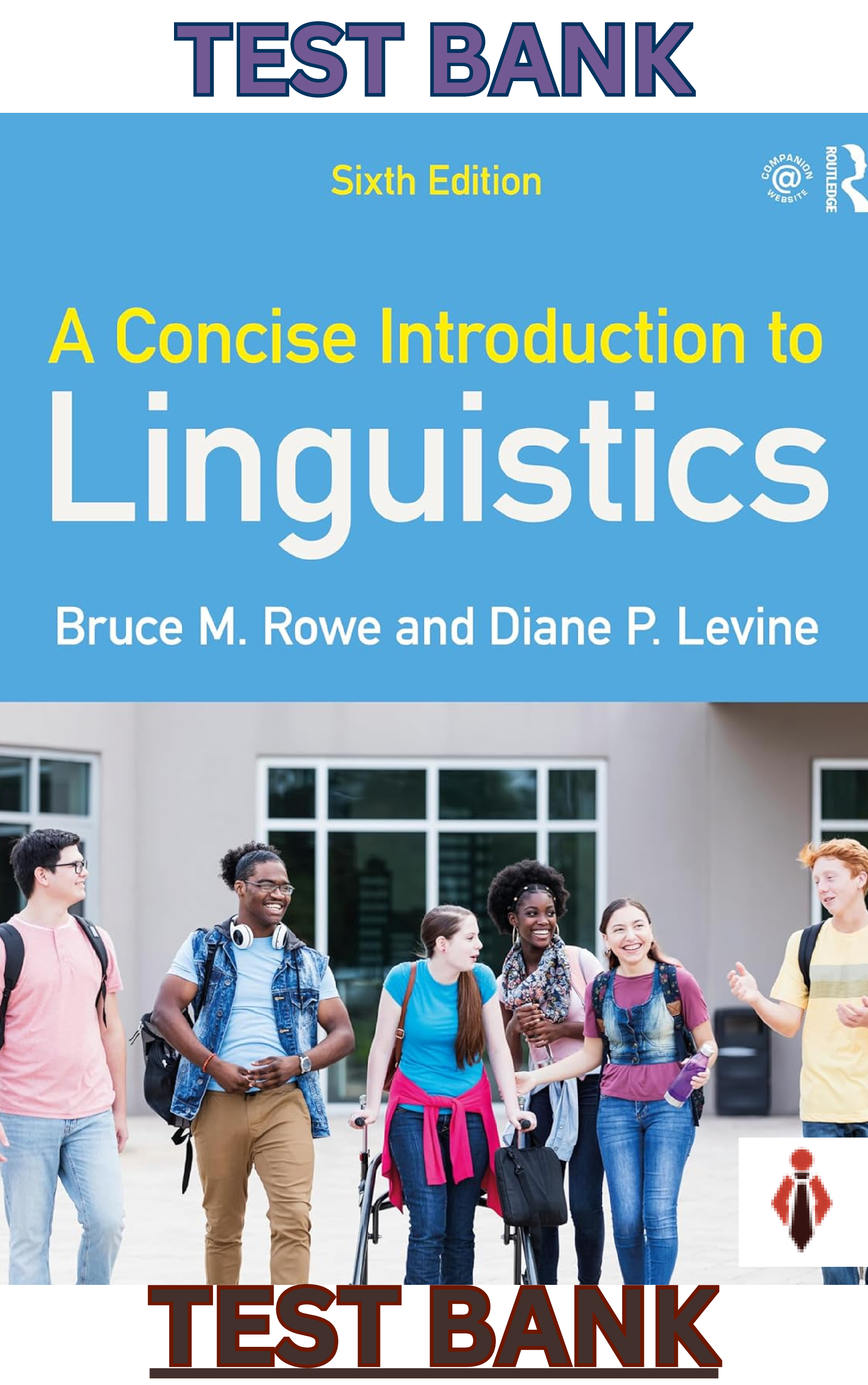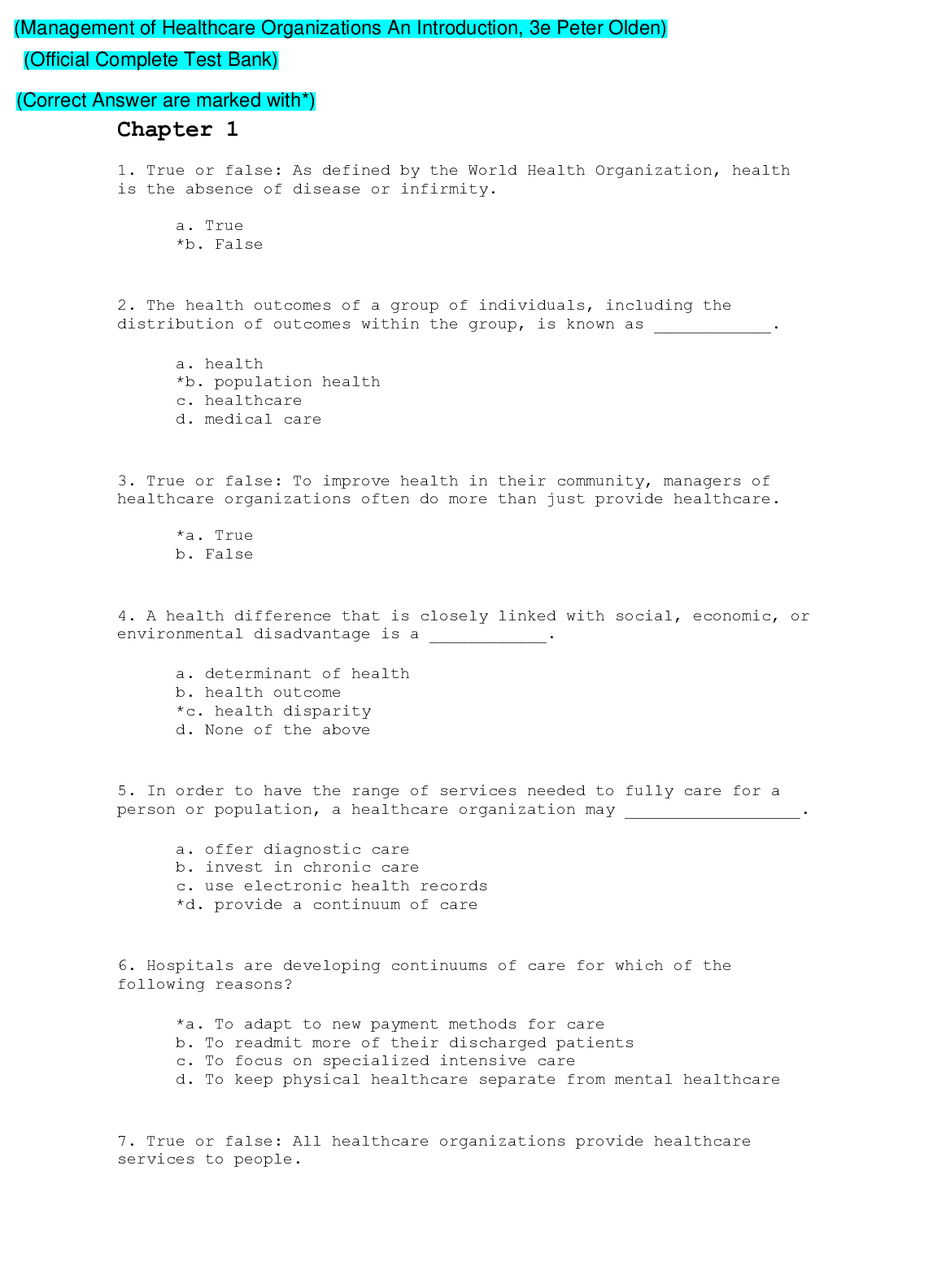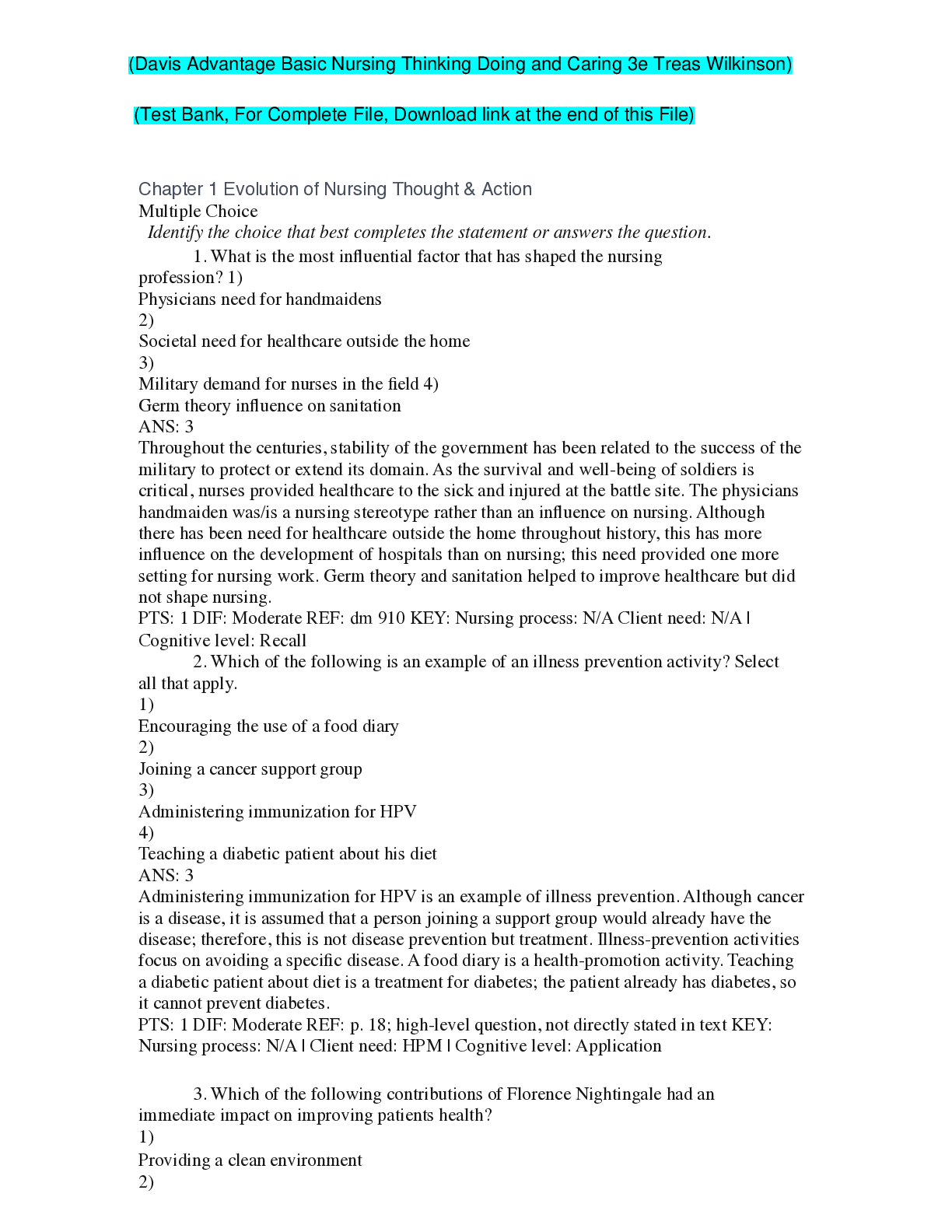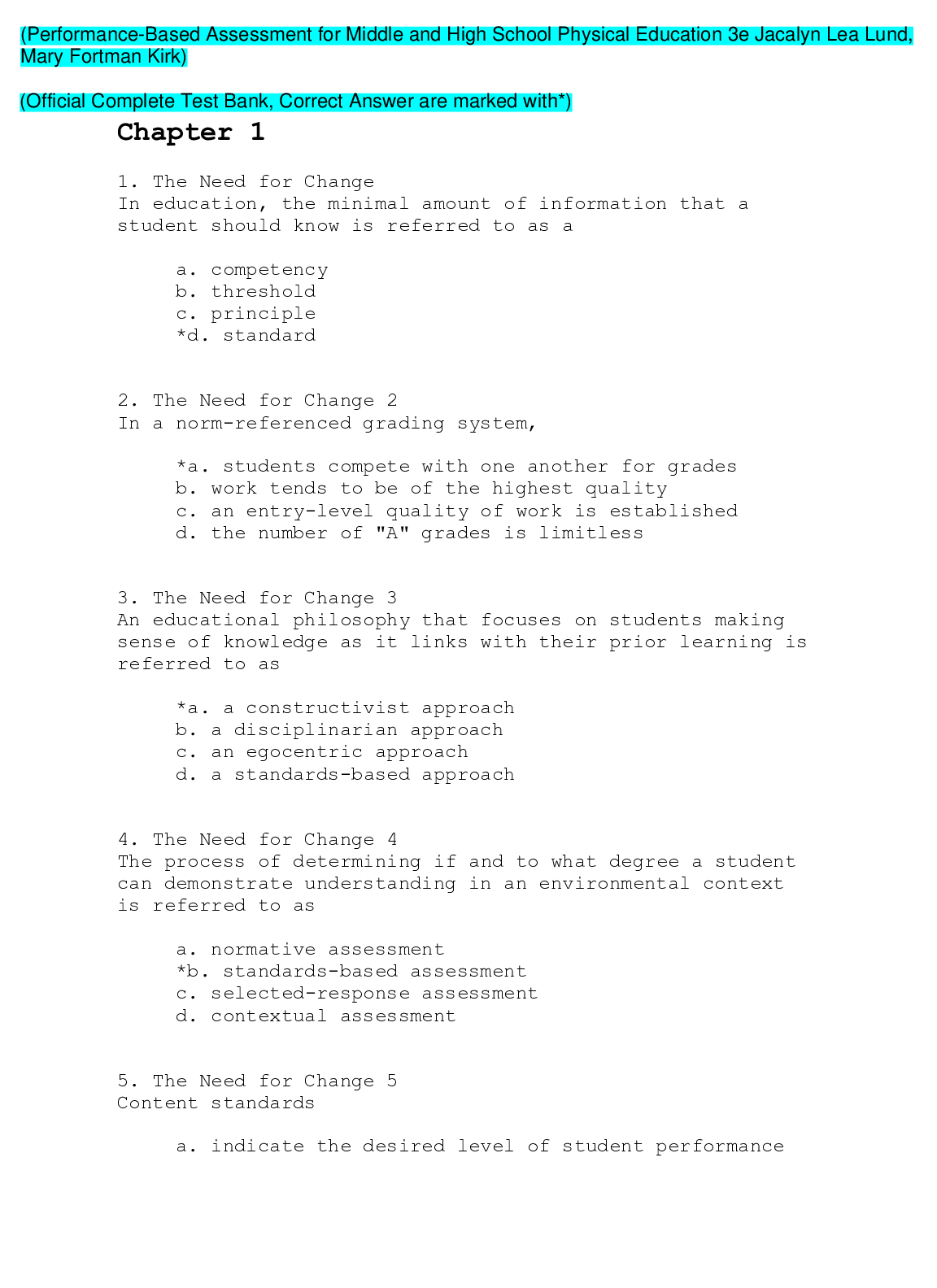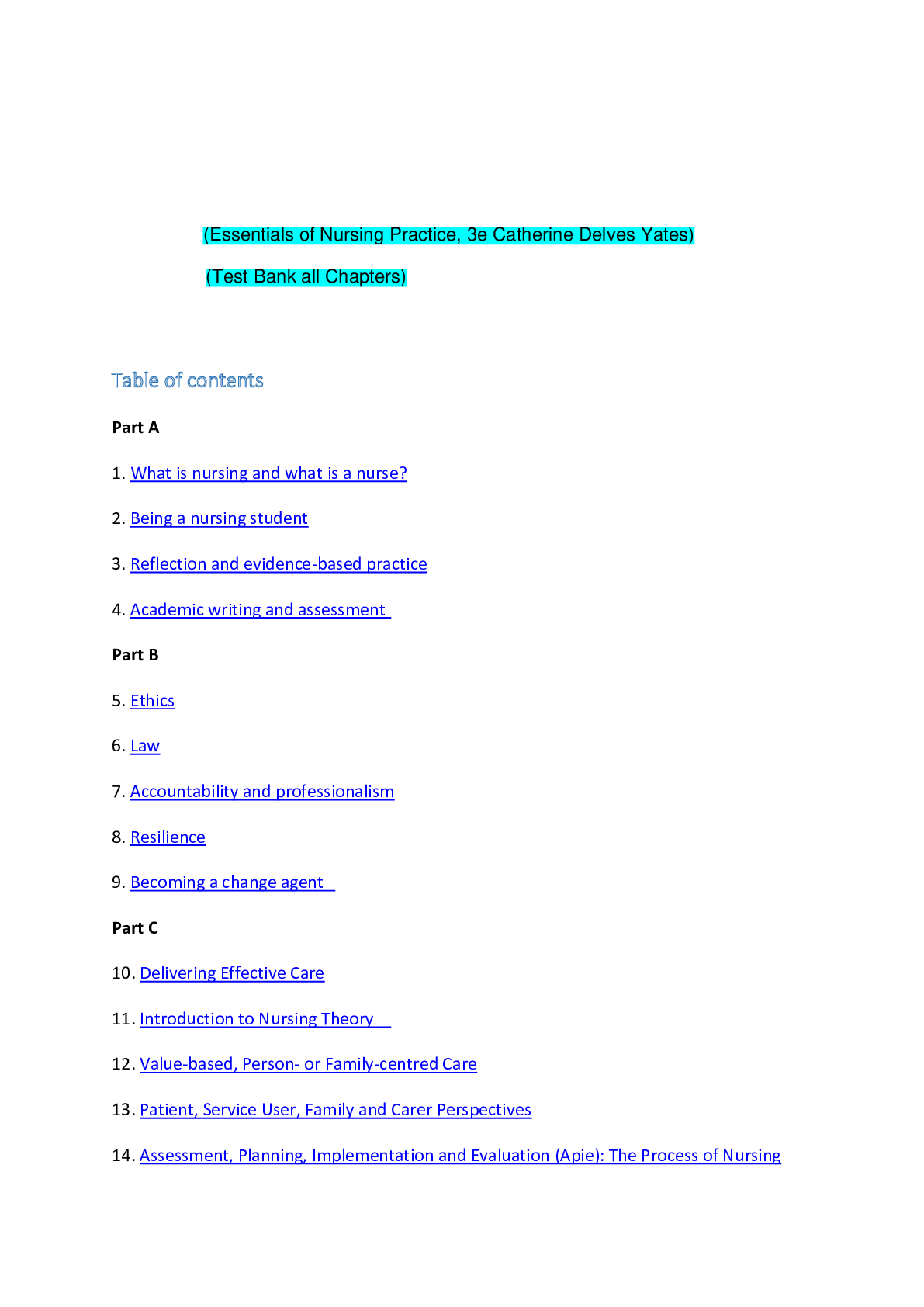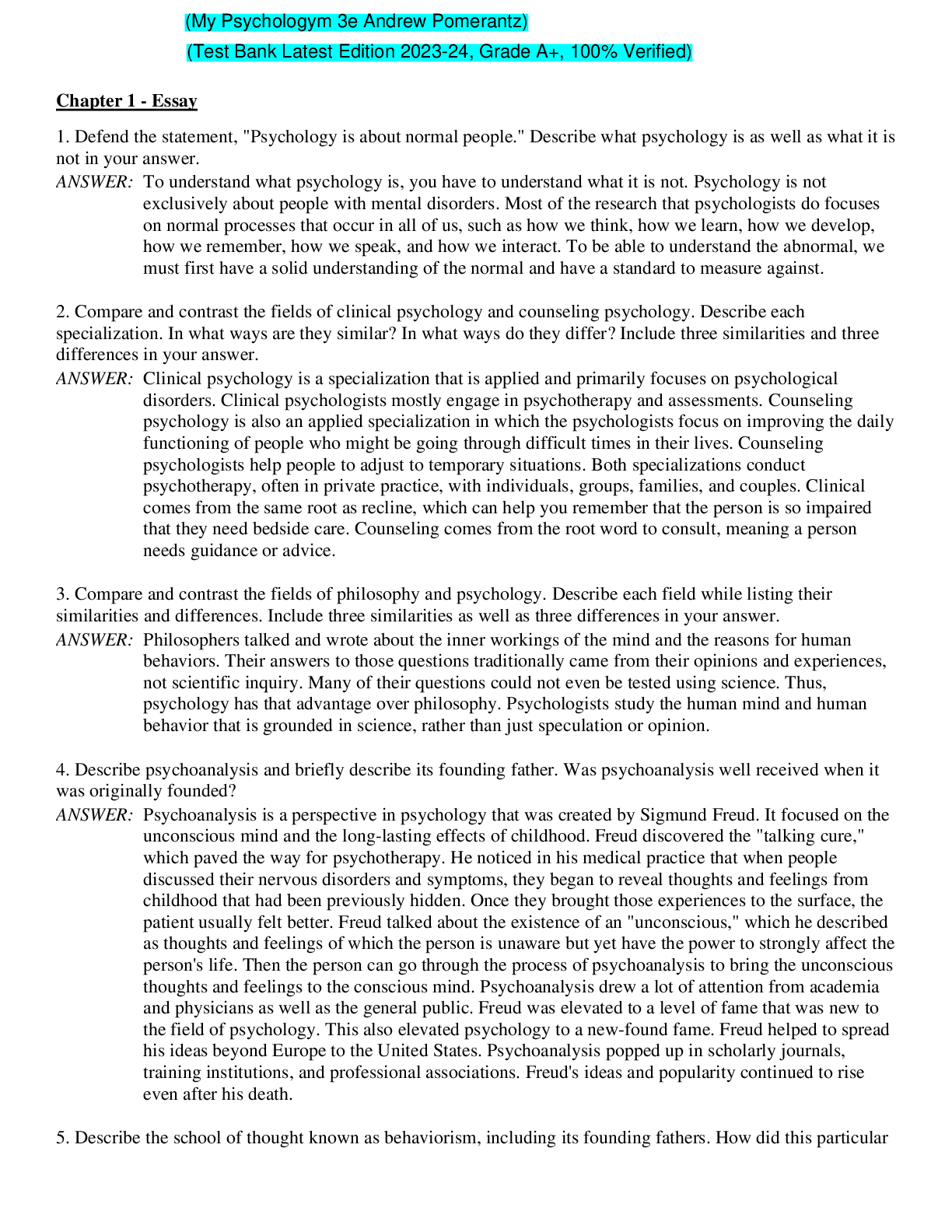Chemistry > TEST BANK > The Analysis of Biological Data, 3rd Edition by Michael C. Whitlock Test Bank (All)
The Analysis of Biological Data, 3rd Edition by Michael C. Whitlock Test Bank
Document Content and Description Below
Test Bank for The Analysis of Biological Data, 3rd Edition, 3e by Michael C. Whitlock; Dolph Schluter TEST BANK ISBN-13: 9781319374433 Full chapters included PART 1 INTRODUCTION TO STATISTICS 1.... 0 Statistics and samples 1.1 What is statistics? 1.2 Sampling populations 1.3 Types of data and variables 1.4 Frequency distributions and probability distributions 1.5 Types of studies 1.6 Summary Interleaf 1 Correlation does not require causation 2.0 Displaying data 2.1 Guidelines for effective graphs 2.2 Showing data for one variable 2.3 Showing association between two variables and differences between groups 2.4 Showing trends in time and space 2.5 How to make good tables 2.6 How to make data files 2.7 Summary 3.0 Describing data 3.1 Arithmetic mean and standard deviation 3.2 Median and interquartile range 3.3 How measures of location and spread compare 3.4 Cumulative frequency distribution 3.5 Proportions 3.6 Summary 3.7 Quick Formula Summary 4.0 Estimating with uncertainty 4.1 The sampling distribution of an estimate 4.2 Measuring the uncertainty of an estimate 4.3 Confidence intervals 4.4 Error bars 4.5 Summary 4.6 Quick Formula Summary Interleaf 2 Pseudoreplication 5.0 Probability 5.1 The probability of an event 5.2 Venn Diagrams 5.3 Mutually exclusive events 5.4 Probability distributions 5.5 Either this or that: adding probabilities 5.6 Independence and the multiplication rule 5.7 Probability trees 5.8 Dependent events 5.9 Conditional probability and Bayes' theorem 5.10 Summary 6.0 Hypothesis testing 6.1 Making and using hypotheses 6.2 Hypothesis testing: an example 6.3 Errors in hypothesis testing 6.4 When the null hypothesis is not rejected 6.5 One-sided tests 6.6 Hypothesis testing versus confidence intervals 6.7 Summary Intereaf 3 Why statistical significance is not the same as biological importance PART 2 PROPORTIONS AND FREQUENCIES 7.0 Analyzing proportions 7.1 The binomial distribution 7.2 Testing a proportion: the binomial test 7.3 Estimating proportions 7.4 Deriving the binomial distribution 7.5 Summary 7.6 Quick Formula Summary Interleaf 4 Biology and the history of statistics 8.0 Fitting probability models to frequency data 8.1 X^2 goodness-of-fit test: the proportional model 8.2 Assumptions of the X^2 goodness-of-fit test 8.3 Goodness-of-fit tests when there are only two categories 8.4 Random in space or time: the Poisson distribution 8.5 Summary 8.6 Quick Formula Summary Interleaf 5 Making a plan 9.0 Contingency analysis: Associations between categorical variables 9.1 Associating two categorical variables 9.2 Estimating association in 2 × 2 tables: relative risk 9.3 Estimating association in 2x2 tables: the odds ratio 9.4 The x^2 contingency test 9.5 Fisher's exact test 9.6 Summary 9.7 Quick Formula Summary PR1 Review Problems 1 PART 3 COMPARING NUMERICAL VALUES 10.0 The normal distribution 10.1 Bell-shaped curves and the normal distribution 10.2 The formula for the normal distribution 10.3 Properties of the normal distribution 10.4 The standard normal distribution and statistical tables 10.5 The normal distribution of sample means 10.6 Central limit theorem 10.7 Normal approximation to the binomial distribution 10.8 Summary 10.9 Quick Formula Summary Interleaf 6 Controls in medical studies 11.0 Inference for a normal population 11.1 The t-distribution for sample means 11.2 The confidence interval for the mean of a sample distribution 11.3 The one-sample t-test 11.4 Assumptions of the one-sample t-test 11.5 Estimating the standard deviation and variance of a normal population 11.6 Summary 11.7 Quick Formula Summary 12.0 Comparing two means 12.1 Paired sample versus two independent samples 12.2 Paired comparison of means 12.3 Two-sample comparison of means 12.4 Using the correct sampling units 12.5 The fallacy of indirect comparison 12.6 Interpreting overlap of confidence intervals 12.7 Comparing variances 12.8 Summary 12.9 Quick Formula Summary Interleaf 7 Which test should I use? 13.0 Handling violations of assumptions 13.1 Detecting deviations from normality 13.2 When to ignore violations of assumptions 13.3 Data transformations 13.4 Nonparametric alternatives to one-sample and paired t-tests 13.5 Comparing two groups: the Mann-Whitney U-test 13.6 Assumptions of nonparametric tests 13.7 Type I and Type II error rates of nonparametric methods 13.8 Permutation tests 13.9 Summary 13.10 Quick Formula Summary RP2 Review Problems 2 14.0 Designing experiments 14.1 Lessons from clinical trials 14.2 How to reduce bias 14.3 How to reduce the influence of sampling error 14.4 Experiments with more than one factor 14.5 What if you can't do experiments? 14.6 Choosing a sample size 14.7 Summary 14.8 Quick Formula Summary Interleaf 8 Data dredging 15.0 Comparing means of more than two groups 15.1 The analysis of variance 15.2 Assumptions and alternatives 15.3 Planned comparisons 15.4 Unplanned comparisons 15.5 Fixed and random effects 15.6 ANOVA with randomly chosen groups 15.7 Summary 15.8 Quick Formula Summary Interleaf 9 Experimental and statistical mistakes PART 4 REGRESSION AND CORRELATION 16.0 Correlation between numerical variables 16.1 Estimating a linear correlation coefficient 16.2 Testing the null hypothesis of zero correlation 16.3 Assumptions 16.4 The correlation coefficient depends on the range 16.5 Spearman's rank correlation 16.6 The effects of measurement error on correlation 16.7 Summary 16.8 Quick Formula Summary Interleaf 10 Publication bias 17.0 Regression 17.1 Linear Regression 17.2 Confidence in predictions 17.3 Testing hypotheses about a slope 17.4 Regression toward the mean 17.5 Assumptions of regression 17.6 Transformations 17.7 The effects of measurement error on regression 17.8 Regression with nonlinear relationships 17.9 Logistic regression: fitting a binary response variable 17.10 Summary 17.11 Quick Formula Summary Interleaf 11 Meta-analysis RP3 Review Problems 3 PART 5 MODERN STATISTICAL METHODS 18.0 Multiple explanatory variables 18.1 ANOVA and linear regression are linear models 18.2 Analyzing experiments with blocking 18.3 Analyzing factorial designs 18.4 Adjusting for the effects of a covariate 18.5 Assumptions of general linear models 18.6 Summary Interleaf 12 Using species as data points 19.0 Computer-intensive methods 19.1 Hypothesis testing using simulation 19.2 Bootstrap standard errors and confidence intervals 19.3 Summary 20.0 Likelihood 20.1 What is the likelihood? 20.2 Two uses of likelihood in biology 20.3 Maximum likelihood estimation 20.4 Versatility of maximum likelihood estimation 20.5 Log-likelihood ratio test 20.6 Summary 20.7 Quick Formula Summary 21.0 Survivorship analysis 21.1 Survival curves 21.2 Comparing two survival curves 21.3 Summary 21.4 Quick Formula Summary BACK MATTER Statistical tables Literature cited Answers to practice problems Index [Show More]
Last updated: 7 months ago
Preview 1 out of 361 pages
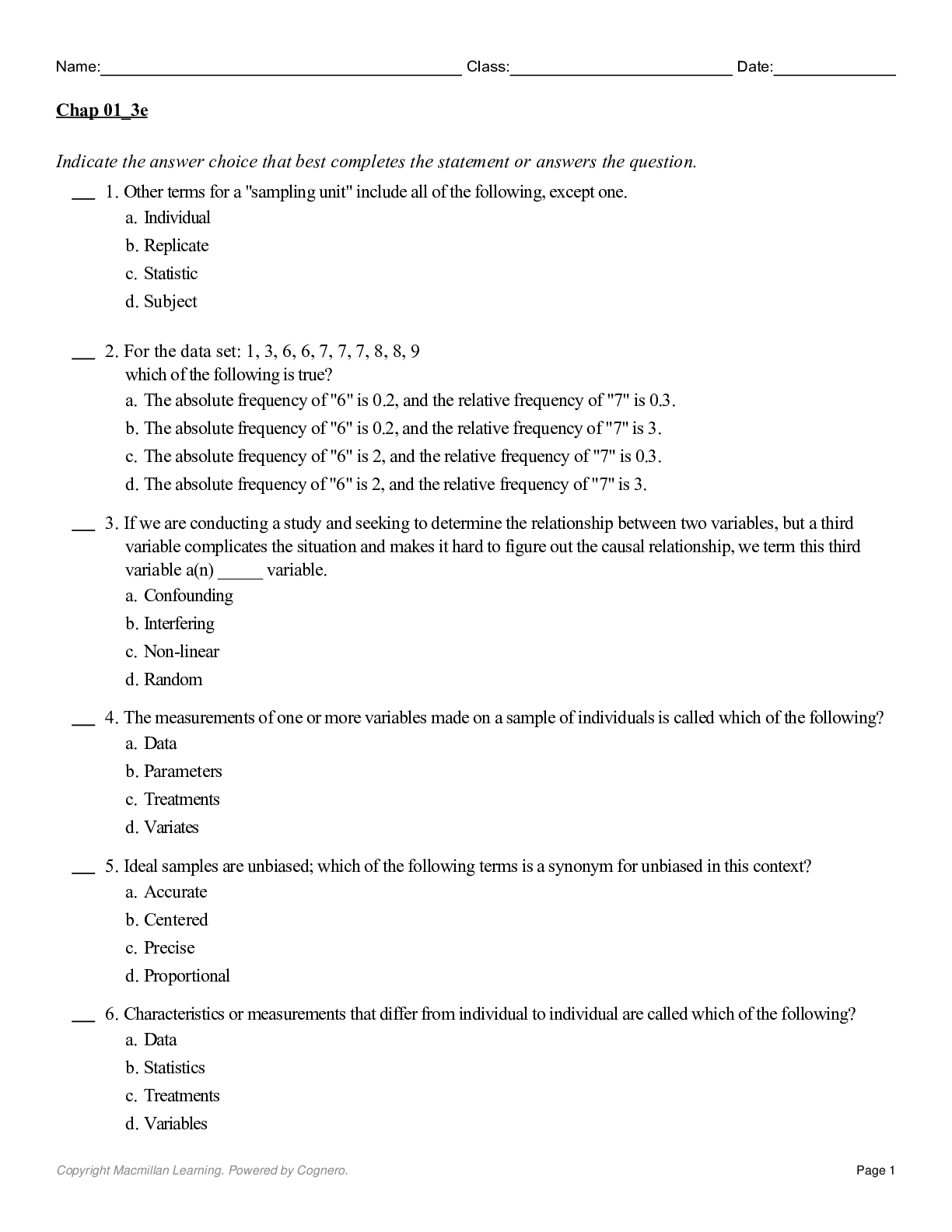
Reviews( 0 )
Document information
Connected school, study & course
About the document
Uploaded On
Aug 29, 2022
Number of pages
361
Written in
Additional information
This document has been written for:
Uploaded
Aug 29, 2022
Downloads
1
Views
92





